We all have our favorite streams. For some folks, it’s a pristine mountain creek dropping down through a remote, forested valley. For others, it’s a pretty little stretch of water just past the edge of town, a place where they’ve fished a hundred times and, with a bit of luck, will fish a hundred more. Easy access helps breed familiarity, and familiarity builds intimacy; it’s all about that personal, ongoing connection with the local landscape. And then, of course, there are the myriad anglers who enjoy famous waters like the Bighorn, the Beaverkill or the Madison. There’s something special about those legendary rivers that pull hard at our center of gravity and keeps us coming back year in and year out.
I also know a handful of people who will tell you that their favorite stream is whichever one they’ll visit next. That can sound a touch glib, but like as not it’s still accurate. Some anglers just love to stand in the water and cast, and the spot they’re fishing is far less important than the fact that they’re out of the house and wading deep into life.
I do have a couple of prerequisites for any stream on my list of personal favorites. First, it has to hold trout. I don’t begrudge bass lovers their liaisons - as a wise man once said, “to each his own” - but if I’m going to fall in love, it’s going to be on a trout stream.
Second, those trout have to be wild. Stocked fish just won’t do, which rules out all those famous eastern rivers where a hatchery truck turns what would otherwise be a fine smallmouth fishery into something akin to Trout Central.
Just so you know, I’m not overly picky when it comes to the species. Browns are great, as are rainbows. So are brookies and cutts and bull trout. I love them all. Steelhead, too. But wild is key. And because I’ve been doing this fly fishing thing for a while now, I like it when the fish are challenging. There’s nothing wrong with eager trout, at least not for the first hour or two I’m out on the water, but a fish who pushes my angling envelope is ultimately way more interesting than his easy-to-catch cousin.
More Like This
Then there’s the stream itself. The water should be clean and clear, with decent temperatures, plenty of dissolved oxygen, and an optimal pH. And it should go without saying that the more mayflies, caddis and stoneflies, the merrier. Lots of bugs translates into lots of hatches, which means healthy trout and plenty of dry fly activity.
I also have a soft spot in my heart for spring creeks; in part because they’re ideal habitat for trout and in part because genuine, honest-to-goodness spring creeks are awfully rare. If you live within a half day’s drive of a spring-fed stream with plenty of trout and some degree of angling access, you should consider yourself incredibly lucky.
Oh, and there’s one final requirement: natural beauty. Depending on where you fish, this could include snow-capped mountains, or meadows lit up with wildflowers, or majestic pines or cottonwoods or maples or redwoods ..... all of which are a gift to the eye and a balm for the soul. Heck, as far as I’m concerned, at least half of our on-the-water experience involves drinking in the sights and sounds and smells that lift our spirits and restore our connection to the landscapes we cherish.
A couple of years ago, with the temps just upstream of freezing and gunmetal skies kicking out the occasional shot of light rain, I parked near an old gravel pit and picked my way through a quarter mile of scratchy, clinging sage down towards the river’s edge. It was a gloomy day, and for a second or two I looked back up towards the darkness of the surrounding forest and wished I’d brought my bear spray. There wasn’t another angler in sight - in fact, there wasn’t much of humanity in evidence - and the late afternoon overcast seemed to hold the promise of grizzly bear cubs and unhappy mothers. Of course, a friend of mine had been attacked by a griz not more than a couple miles from where I stood, so maybe that bit of not-too-distant history was coloring my perspective.
Regardless, I didn’t have any bear spray in the rig and with the river calling there wasn’t much point in worrying about it.
The sage, rough barked and low, gave way to tall, slender grass close to the water’s edge and I turned downstream and followed a well-worn angler’s trail towards a series of pristine springs that pool together and feed into the river. The water upstream was insect-free and I wanted to see if the moderating spring-water temperatures might not precipitate an early October mayfly hatch.
When I finally stepped into the river, the bottom was gravel - clean and bright - with the occasional weed bed waving silently under the surface in the slow moving current. The water was shallow and it stayed that way as I waded downstream and out toward the middle of the river. I wanted to be well clear of the north bank, which is where I thought I might find a few BWOs floating on the surface below the springs, and where I hoped to find a nice rainbow or two rising and filling its belly.
They were harder to see than I anticipated - or maybe it’s just that my eyes aren’t quite as good as they used to be - but the hoped-for insects were there, and so, thankfully, were the fish. Some of those Idaho rainbows were small, maybe eight or ten inches, while others were twice that size, or more. They were in a pod, twenty or thirty different wild trout sipping and slurping mayflies in between the raindrops, feeding in water so clear that it took the dimples of precipitation and the slow rises of dozens of trout to give the surface texture; to make it all seem real.
In case you’re wondering, it was real, and the fishing for the next couple of hours was truly outstanding. Of course, that’s the Henry’s Fork for you.
We all have our favorite streams. If there’s a blessing to being a fly fisher, it’s that, as times goes past and the memories build, we begin to see the world around us more clearly and we come to appreciate the ever-shifting natural rhythms that infuse our angling. Freestone or tailwater, quick or slow, shallow & open or dark & mysterious, there’s something special, something alluring and deeply personal, about the places we fish. As the future takes hold and gains substance, here’s wishing you success on your favorite waters.




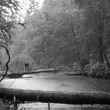
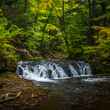
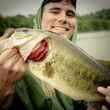




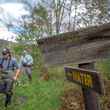
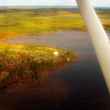



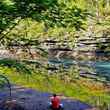
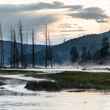



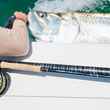
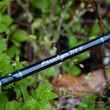



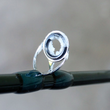
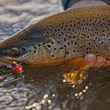



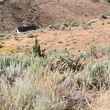
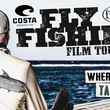
Comments
Kevin replied on Permalink
“Stocked fish just won’t do, which rules out all those famous eastern rivers where a hatchery truck turns what would otherwise be a fine smallmouth fishery into something akin to Trout Central.” Thanks for generalizing many of the beautiful wild trout streams of the northeast as nothing worth fishing. Plenty of beautiful water containing cold water full of wild trout. Maybe next time you visit, try find some stretches away from the tourist traps you dub “trout central.”
Michael replied on Permalink
Wonderful article. If I may, id like to share an experience where the most challenging fish was the most memorable.
I am lucky enough to live within a hour drive from a world class stream, full of huge, finicky, wild trout. This one day, I have been very lucky with catching more than my fair share of them. Then, as the day drew close to an end, and my fishing buddies were signaling to leave, I waded carefully upstream, ready to spot any fish I may spook from the banks, and catalog it for another day. When 15 feet in front of me, I saw the colors of a big rainbow. I stood still, eyeing the color carefully to make sure it wasn't just some rock. Then it moved sideways. Now I knew it wasn't a rock. A minute later, it rose and took a small BWO from the surface. I could tell he was a good 17"-18" fish. Heart pounding, I called out to my buddies upstream if they won't wait a few more minutes for me. They would, of course. Knowing that my heavily weighted nymph rig would just spook this fish, I removed the weight, took off the nymphs, attached 2 feet of 6X tippet, and tied on a size 22 Griffith's Gnat I slowly (really slowly) moved to a location where I could cast without spooking, and have the longest dead drift. Having fished for years, I knew the first cast is the most important. I ginked the fly, coated it with Frogs Fanny, made one false cast away from the fish, and cast the fly into the current into the feeding lane above the rainbow. Now, I cannot really see the fly all that well with my 70 year old eyes, but judging from where the fly landed, I located a speck in the current that must have been it. As I followed the speck, nothing even came close to it. At the end of the drift, the rainbow rose about 3 feet away from the speck. I was cursing under my breath for a fraction of a second, and then thought, maybe ........ I set the hook. Fish on! I won't bother you with how the healthy rainbow fought with my buddies cheering on, and how I managed to land it with the GG hooked perfectly in his upper lip. But of all the fish i had to the net that day, some equal in size and some bigger, that rainbow had to be the most memorable.
Steve replied on Permalink
Arragance at its highest. Sorry we cant all live near Yellowstone. But fishing eastern streams for bass or trout makes us better at adjusting to any situation. This article reminds me of the guy who only hunted birds in the west. Same arrogance and the reason why eastern bird hunters adapted better.
Pages